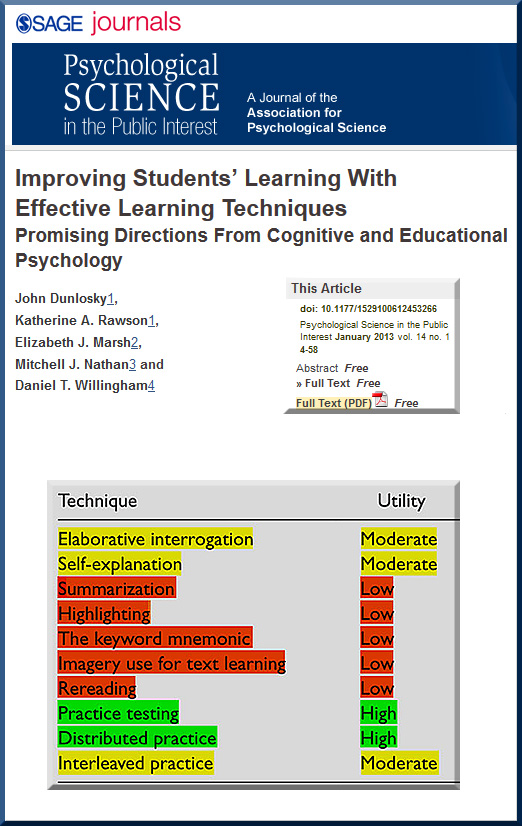Excerpts:
In this monograph, we discuss 10 learning techniques in detail and offer recommendations about their relative utility. We selected techniques that were expected to be relatively easy to use and hence could be adopted by many students. Also, some techniques (e.g., highlighting and rereading) were selected because students report relying heavily on them, which makes it especially important to examine how well they work. The techniques include elaborative interrogation, self-explanation, summarization, highlighting (or underlining), the keyword mnemonic, imagery use for text learning, rereading, practice testing, distributed practice, and interleaved practice.
To offer recommendations about the relative utility of these techniques, we evaluated whether their benefits generalize across four categories of variables: learning conditions, student characteristics, materials, and criterion tasks. Learning conditions include aspects of the learning environment in which the technique is implemented, such as whether a student studies alone or with a group. Student characteristics include variables such as age, ability, and level of prior knowledge. Materials vary from simple concepts to mathematical problems to complicated science texts. Criterion tasks include different outcome measures that are relevant to student achievement, such as those tapping memory, problem solving, and comprehension.
…
Our hope is that this monograph will foster improvements in student learning, not only by showcasing which learning techniques are likely to have the most generalizable effects but also by encouraging researchers to continue investigating the most promising techniques. Accordingly, in our closing remarks, we discuss some issues for how these techniques could be implemented by teachers and students, and we highlight directions for future research.
Also see:
- Sense-making Skills — from Harold Jarche <– with my thanks to Harold for posting this; this is where I got this item from
- The lesson you never got taught in school: How to learn! — from bigthink.com by Neurobonkers









